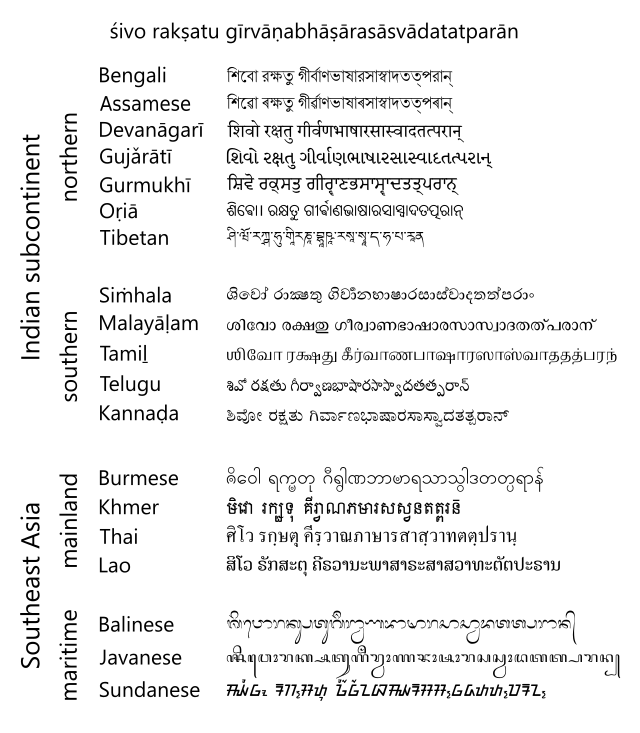
Abugida
Writing system / From Wikipedia, the free encyclopedia
Dear Wikiwand AI, let's keep it short by simply answering these key questions:
Can you list the top facts and stats about Abugida?
Summarize this article for a 10 year old
An abugida (/ˌɑːbuːˈɡiːdə, ˌæb-/ ⓘ;[1] from Ge'ez: አቡጊዳ) – sometimes also called alphasyllabary, neosyllabary, or pseudo-alphabet – is a segmental writing system in which consonant–vowel sequences are written as units; each unit is based on a consonant letter, and vowel notation is secondary, similar to a diacritical mark. This contrasts with a full alphabet, in which vowels have status equal to consonants, and with an abjad, in which vowel marking is absent, partial, or optional – in less formal contexts, all three types of the script may be termed "alphabets".[2] The terms also contrast them with a syllabary, in which a single symbol denotes the combination of one consonant and one vowel.

Related concepts were introduced independently in 1948 by James Germain Février (using the term néosyllabisme)[3] and David Diringer (using the term semisyllabary),[4] then in 1959 by Fred Householder (introducing the term pseudo-alphabet).[5] The Ethiopic term "abugida" was chosen as a designation for the concept in 1990 by Peter T. Daniels.[6][2] In 1992, Faber suggested "segmentally coded syllabically linear phonographic script", and in 1992 Bright used the term alphasyllabary,[7][8] and Gnanadesikan and Rimzhim, Katz, & Fowler have suggested aksara or āksharik.[9]
Abugidas include the extensive Brahmic family of scripts of Tibet, South and Southeast Asia, Semitic Ethiopic scripts, and Canadian Aboriginal syllabics. As is the case for syllabaries, the units of the writing system may consist of the representations both of syllables and of consonants. For scripts of the Brahmic family, the term akshara is used for the units.